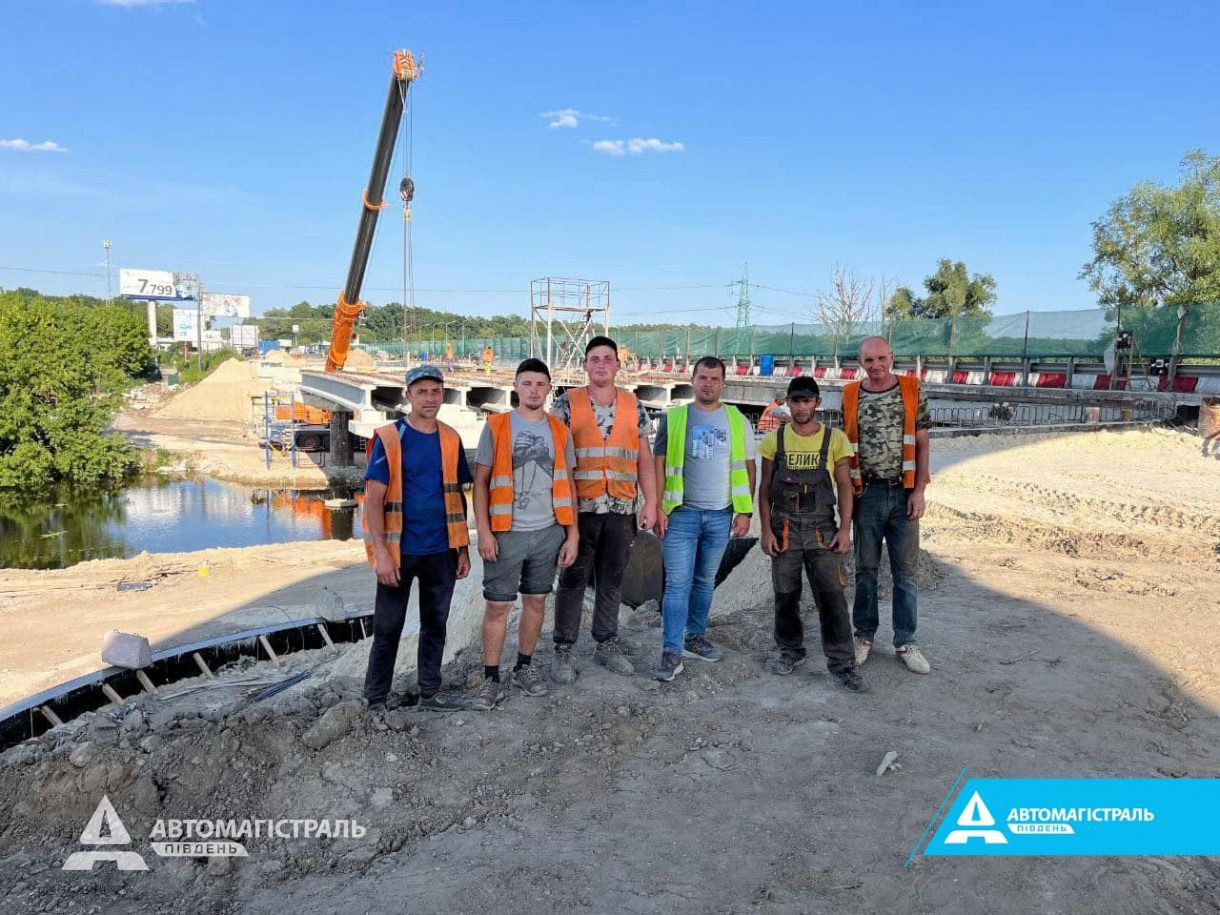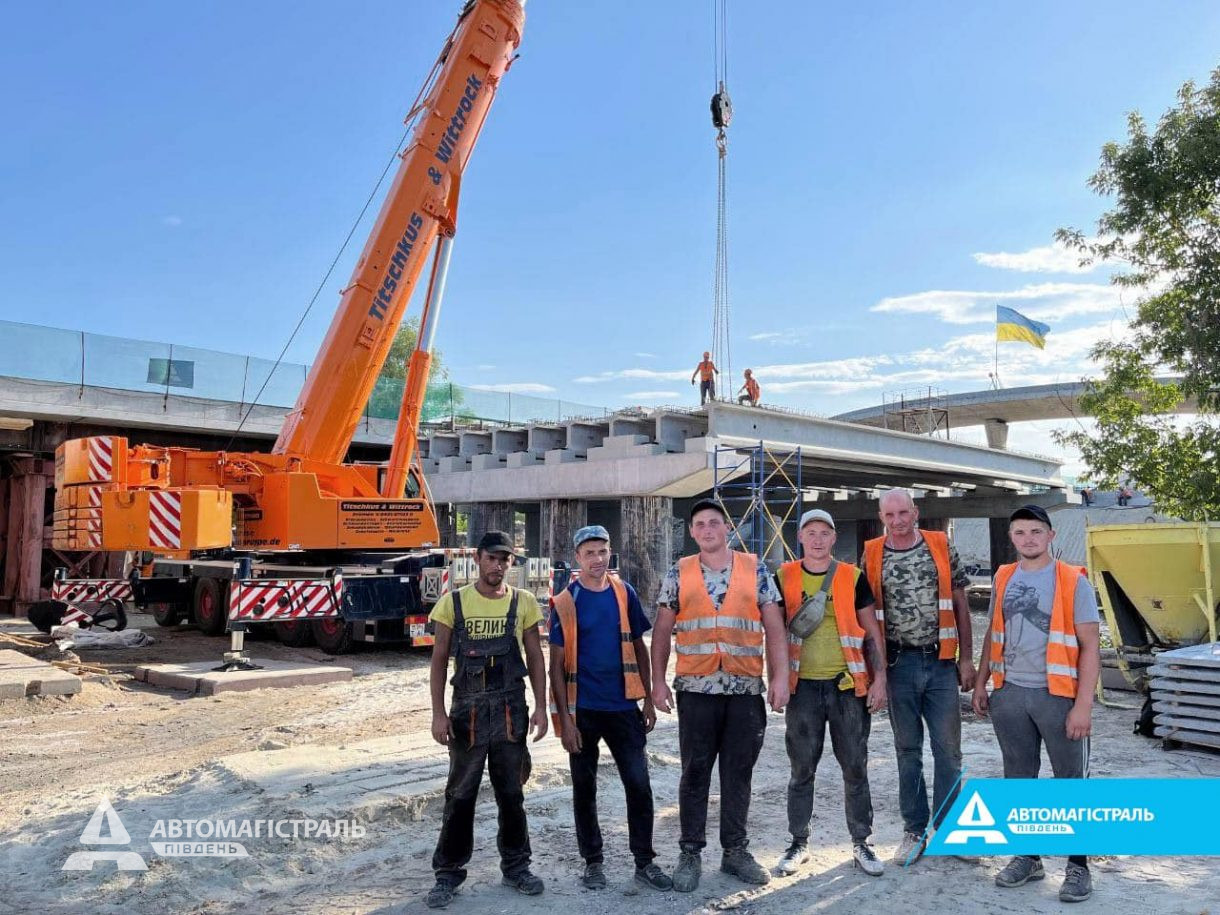Kyiv region: how ordinary road workers become bridge builders
Victory team
Kyiv region is the first region where our company resumed operations after the Russian invasion. Detours were built around destroyed bridges, temporary crossings. Roads were cleaned after de-occupation, emergency repairs were carried out, destroyed buildings were dismantled. They started rebuilding bridges.
Of course, the volume of work could not be compared with the pre-war period.
Not only the scope has changed, but also the specifics. In recent years, the company has performed huge volumes of asphalt concrete works. It was they who occupied the lion’s share of the total production.
Now everything has changed – during the war, no one will carry out medium or major repairs, not to mention new construction. The main task is to keep the road network in passable condition, restore traffic in places where artificial structures (bridges, overpasses) have been destroyed or damaged. After all, during the war in Ukraine, more than 320 bridges and overpasses were destroyed, most of them on public highways. Therefore, operators of road construction machines, road workers are almost not needed today. The profession of bridge builder became the most in demand. But this profession was in short supply even before the war. Today, there are not enough of them either, many are in the army and military personnel or have changed their profession altogether.
Therefore, today in the Kyiv region, professional road workers are quickly retrained and become no less professional bridge builders.On the M-06 highway, on the bridge over the Irpin River near Stoyanka, the team of master Maksym Berladin, which specialized in the installation of road traffic management equipment, earthworks and the preparation of the road base layers, is rapidly mastering the difficult task of bridge construction. The masters took full responsibility for the creation of temporary structures, such as access roads, a construction site, storage areas, and ramps for drilling machines. Work is being carried out on the installation of formwork, the production of reinforced frames, the concreting of the stops of the cone of bridges. They started to strengthen the cones of the bridge with monolithic concrete with the preparation of the base and preliminary reinforcement.
The guys joke: the only thing that makes them different from professional bridge builders is “the sky-high desire to perform bridge construction work at a faster pace, with diligence and a very conscientious attitude compared to those personnel for whom this is a regular routine job.”
On the M-03 highway, the brigade of the station chief Anatoliy Sazanskyi and master Oleksandr Bilyaev is working on the restoration of the bridge over the Trubizh River. Previously, it specialized in the installation of asphalt concrete coverings of roads and airfields. Now, for the first time in her life, she arranged a temporary crossing by filling a dam with mud and installing 7 branches of culverts with a diameter of 1.2 to 1.6 meters. The guys started the traffic on the temporary crossing and are operating it.
Now they have an even more difficult task – to arrange the cones of the bridge, to prepare the foundation for the arrangement of sleepers and transition slabs, to connect the bridge with the embankment.The team members say that there is a thrill in the construction and repair of roads that bridges do not have. When you are used to laying two thousand tons of asphalt concrete in a day and seeing what kind of road is literally being born before your eyes, it is quite difficult to adapt to the moderate pace and small volumes of work on bridges. There are too many types of work, specifics, and nuances. You just can’t drive like that. What’s more, every step is watched by attentive and strict laboratory engineers… But a new specialty always means new opportunities. The experience of building bridges will definitely come in handy when our brigades return to their usual work after the end of the war!


